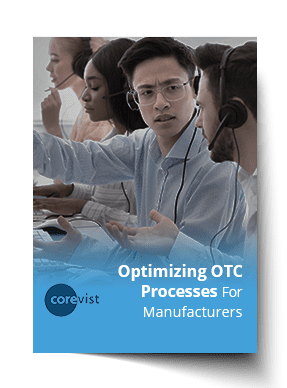Share
Author
George Anderson
Share
In their latest B2B Buying Survey, Digitalcommerce360 asked some pointed questions about how the COVID-19 pandemic has changed buying habits in B2B.
One question really stood out to us, “What caused you to purchase online during COVID-19?”
Respondents could choose more than one answer, and the top three answers illustrate the challenge manufacturers face in meeting buyer expectations.
- Needed products quickly (65%)
- 24×7 access (58%)
- Thought buying online would save us time (52%)
Since post-pandemic buyer expectations aren’t going away any time soon, manufacturers should take note of these expectations and evaluate their own buying experiences. Here are three questions you can use to do that.
How fast do your products reach your customers?
The COVID shift to digital has changed the game. As manufacturers’ customers grapple with ongoing supply chain disruption, they need products faster than ever, with more certainty that everything will arrive on time.
Of course, you can’t control every step in the product’s journey to the customer. Typically, manufacturing processes and shipping transit times are either 1) optimized already or 2) beyond your control.
However, most manufacturers can better optimize their OTC (order to cash) cycles.
OTC optimization for organizations with B2B eCommerce
For organizations that already have a B2B eCommerce solution in place, there are several ways to speed up the OTC cycle.
- Replace batch-based eCommerce integration architecture that only updates once every 24 hours. B2B eCommerce orders should post to your ERP instantly, no errors, all relevant business rules enforced and inventory quantities immediately adjusted in the ERP. (Corevist Commerce provides this.)
- Give customers transparency about their credit status by displaying it in real time within the B2B eCommerce portal. (All Corevist solutions provide this.)
- Eliminate paper-based payment processes by enabling ePayments within your B2B eCommerce portal—for checkout, for self-service invoice payments or for both.
OTC optimization for organizations without B2B eCommerce
For manufacturers that haven’t launched B2B eCommerce, the imperative is clear. COVID-19 has created a new, digital-first “normal” in all verticals. B2B buyers are researching and buying products online, and manufacturers aren’t immune to this shift. In fact, it’s causing manufacturers in all verticals to reevaluate their customer experience.
NEW Report:
Optimizing OTC Processes for Manufacturers
Every manufacturer needs to become more efficient. Here’s the ultimate guide to optimizing your OTC cycle. Read now.
Can your customers buy from you online, 24×7?
Around-the-clock product availability isn’t as simple as it sounds. It’s not enough if your products are only available on Amazon Business or through distributors. As B2B buyers increasingly prefer to buy directly from manufacturers, you need to provide a branded, 24×7 B2B eCommerce portal that never shows obsolete information.
Here’s a small sample of things customers need in that buying experience.
- Real-time SAP integration that always displays 100% accurate data, 24×7
- Personalized catalogs that only show relevant SKUs.
- Dynamic personalized pricing that’s pulled from the ERP in real time.
- Accurate inventory availability, including personalized calculations for ATP (available to promise), pulled from the ERP in real time.
Without this live data from the ERP (and live interaction with the ERP), your B2B eCommerce experience can’t guarantee 24×7 buying. If customers can’t get the personalization they need, they’ll have to call customer service — which leads us to our next point.
Does your online buying experience really save time for customers?
It all boils down to this. If your current ordering processes (or your B2B eCommerce experience) can’t provide 100% self-service, then you’re not saving time for customers.
Ultimately, B2B buyers are looking for 100% self-service. That means no more phone calls to get inventory availability, accurate contract pricing, or resolutions to order problems.
This is a tough proposition for many manufacturers. Because conventional B2B eCommerce solutions can’t provide comprehensive, real-time ERP integration, they can’t deliver 100% self-service.
Ultimately, that costs your customers more time and energy.
The Corevist difference
Because Corevist Commerce is built on a real-time SAP ERP integration, it empowers your customers to buy products and manage their accounts through self-service. Our deep integration gives them personalized data and business rules as if they were entering their own orders in SAP — all in a beautiful, user-friendly experience.
Want to learn more?
Watch the demo video.
Learn how Corevist Commerce covers every step of the customer journey with deep SAP integration.











